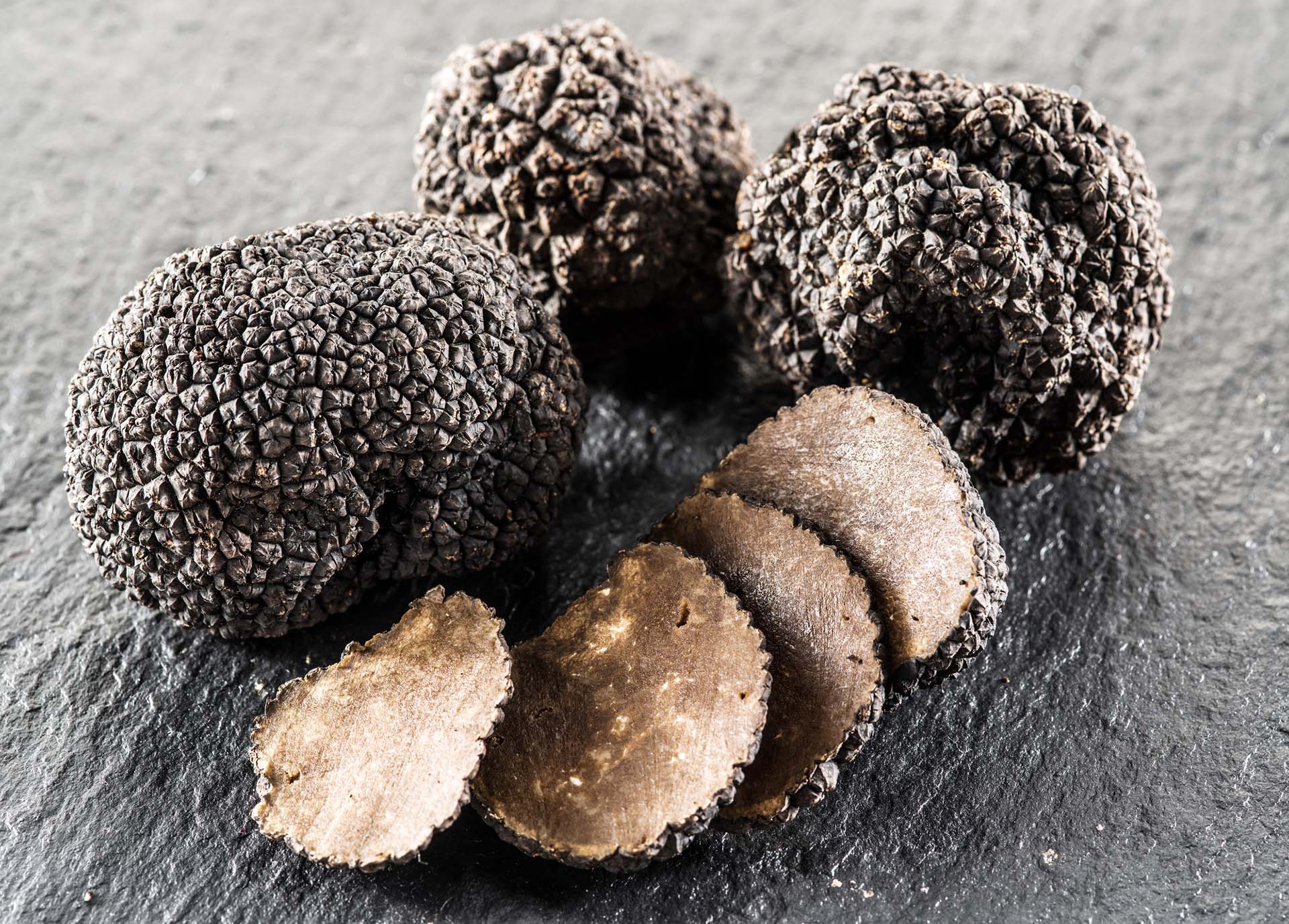Truffles
Tuber Aestivum…
A truffle is the fruiting body of a subterranean ascomycete fungus, predominantly one of the many species of the genus Tuber. In addition to Tuber, many other genera of fungi are classified as truffles including Geopora, Peziza, Choiromyces, Leucangium, and over a hundred others. These genera belong to the class Pezizomycetes and the Pezizales order. There are several truffle-like basidiomycetes excluded from Pezizales including Rhizopogon and Glomus. Truffles are ectomycorrhizal fungi and are therefore usually found in close association with tree roots. Spore dispersal is accomplished through fungivores, animals that eat fungi. These fungi have significant ecological roles in nutrient cycling and drought tolerance.
Some of the truffle species are highly prized as food. French gourmet Jean Anthelme Brillat-Savarin called truffles "the diamond of the kitchen". Edible truffles are held in high esteem in French, Italian, Ottoman, Middle Eastern and Spanish cuisine, as well as in international haute cuisine. Truffles are cultivated agriculturally and are also harvested from natural habitats.
Because of their high price and their pungent aroma, truffles are used sparingly. Supplies can be found commercially as unadulterated fresh produce or preserved, typically in a light brine.
As the volatile aromas dissipate quicker when heated, truffles are generally served raw and shaved over warm, simple foods where their flavor will be highlighted, such as buttered pasta or eggs. Thin truffle slices may be inserted into meats, under the skins of roasted fowl, in foie gras preparations, in pâtés, or in stuffings. Some specialty cheeses contain truffles as well. Truffles are also used for producing truffle salt and truffle honey.
While in the past chefs used to peel truffles, in modern times, most restaurants brush the truffle carefully and shave it or dice it with the skin on so as to make the most of this valuable ingredient. Some restaurants stamp out circular discs of truffle flesh and use the skins for sauces.
Truffle oil is used as a lower-cost and convenient substitute for truffles, to provide flavouring, or to enhance the flavour and aroma of truffles in cooking. Many "truffle oils", however, do not contain any truffles, while others will include pieces of one of the many inexpensive, unprized truffle varietals, which have no culinary value simply for show. The vast majority is oil which has been artificially flavoured using a synthetic agent such as 2,4-dithiapentane.
Because a greater variety of aromatic molecules in truffles are soluble in alcohol, it can be used to carry a more complex and accurate truffle flavour than oil without the need for synthetic flavourings. However, many commercial producers of "truffled" alcohol use 2,4-dithiapentane regardless, as it has become the dominant flavor most consumers, who have never been exposed to fresh truffles but only truffle oils, associate with them. Because most Western nations do not have ingredient labeling requirements for spirits, there is often no way for consumers to know if additional flavorings have been used. Although used as a spirit in its own right and mixed in a range of cocktails, truffle-flavored alcohol is also used by chefs to flavour dishes.


